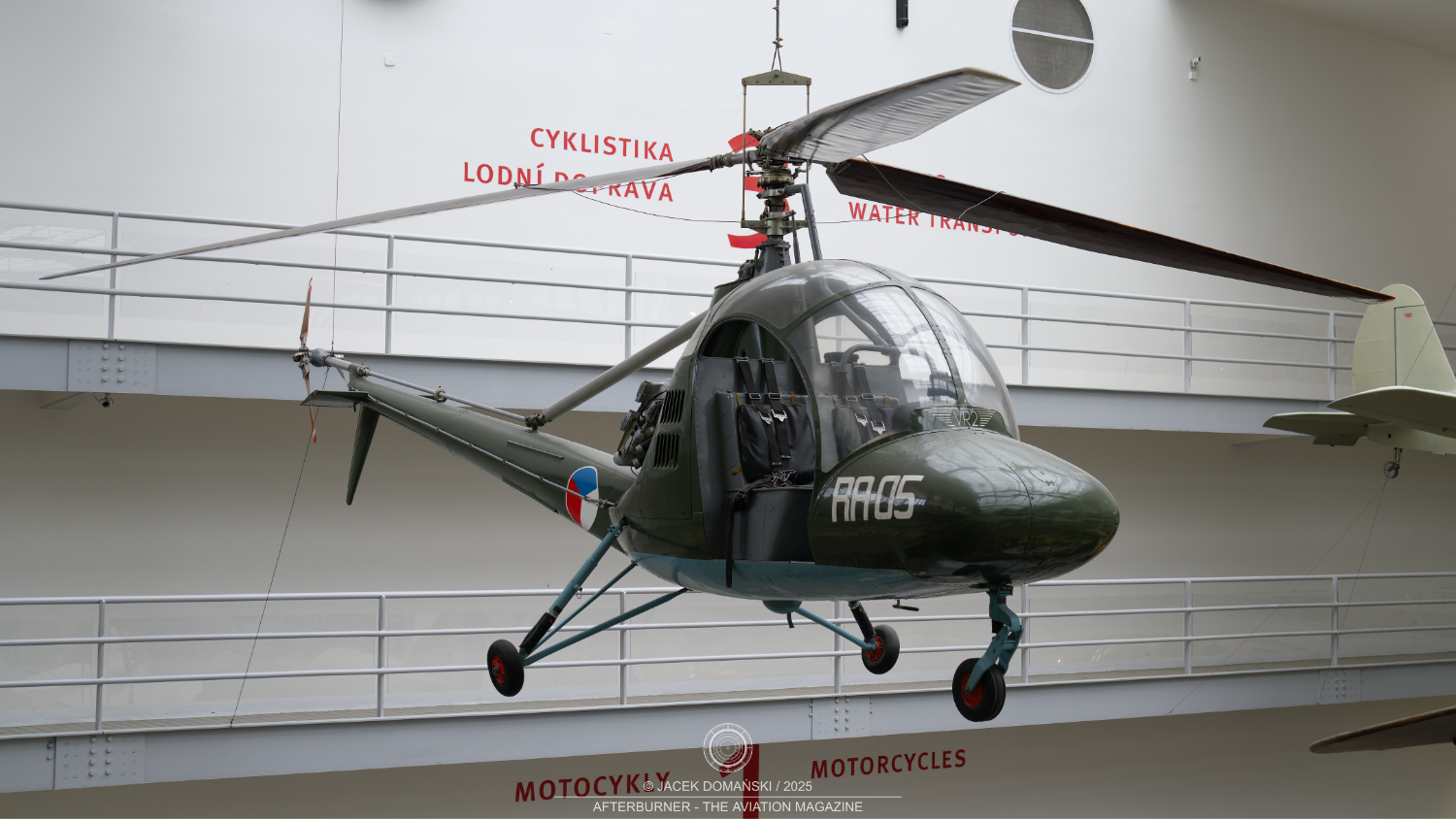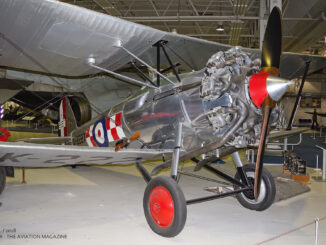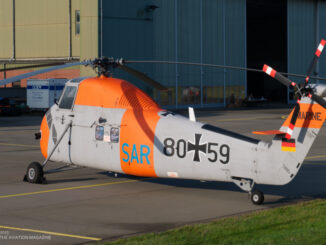 HC-2 Heli Baby (c/n 002 – 2nd prototype, RA-05 of the Czechoslovak Air Force, formerly OK-10), light utility helicopter, on display at the National Technical Museum, Prague, April 2025.
HC-2 Heli Baby (c/n 002 – 2nd prototype, RA-05 of the Czechoslovak Air Force, formerly OK-10), light utility helicopter, on display at the National Technical Museum, Prague, April 2025.
In the late 1940s, the development team led by Jaroslav Šlechta, began to work on development of the first – and only – serially produced Czechoslovak helicopter. In the previous years, Šlechta worked for the Praga company and was appointed the chief designer of its aviation division. In addition, he was one of the creators of the Praga XE-II – the first Czechoslovak rotorcraft which, however, did not make it beyond the prototype stage.
On 3rd March 1954, the first prototype of the rotorcraft, designated HC-2, performed a tethered flight. Its first free flight took place on 3rd December of the same year.
During work on the prototype, the design team was reassigned a few times, being transferred between various aviation companies and institutes. Eventually, Šlechta and his colleagues were taken over by the Výzkumný a zkušební letecký ústav (Aeronautical Research and Test Institute – VZLÚ), where the second HC-2 prototype was completed in 1955. However, these changes of affiliation later caused confusion over the rotorcraft designation, which – particularly outside the Czech Republic – was often referred to as the Aero HC-2, VZLÚ HC-2 or Moravan HC-2.
In September 1955, the HC-2 prototype was shown to the public for the first time – initially at the Aviation Day held at Prague-Ruzyně Airport, and then at the 1st Exhibition of Czechoslovak Engineering in Brno. In 1958, the helicopter made its international debut at EXPO 58 in Brussels, Belgium.
In 1955, the HC-2 was approved for serial production at the Moravan aviation works in Otrokovice, at that time part of the Strojírny první pětiletky (Machine Works of the First Five-Year Plan) group. However, due to technical issues with the Praga DH engine, the first production helicopter did not leave the factory until 1958.
Ultimately, these engine troubles sealed the fate of the first serially built Czechoslovak rotorcraft. Firstly, delays in development caused the armed forces to lose interest; and as early as 1957, they opted to acquire the Mil Mi-1 instead. Secondly, the 83 hp Praga DH engine was insufficiently powerful for the airframe. In conclusion, only fifteen HC-2s were built.
In the early 1960s, the Moravan factory developed a modernised variant of the helicopter, known as the HC-102 and equipped with a 115 hp Avia M-110H powerplant. Twenty examples of the upgraded rotorcraft were produced, and all earlier HC-2s were also converted to this more powerful version.
In 1963, VZLÚ began developing another variant, the HC-202, intended to be fitted with an uprated M-110H producing 138 hp. However, as serial production of the rotorcraft had been discontinued by 1964, work on the HC-202 was abandoned.
Initially, the Czechoslovak Armed Forces were the sole operators of the HC-2 and later the HC-102. However, once deliveries of the Mi-1 – and also the Mi-4 – began, the domestically produced rotorcraft were withdrawn from military service and transferred to the Svazarm paramilitary organisation (Svaz pro spolupráci s armádou – Union for Cooperation with the Army), where they remained in use until the late 1970s.
Both of the HC-2 prototypes have survived to this day. The first, registered as OK-09, is being displayed at the Kbely Aviation Museum in Prague and has retained its original test livery.
The second prototype, formerly registered as OK-10, is on display at the National Technical Museum in Prague, where our current Photo of the Week was taken in April 2025. The aircraft carries the RA-05 markings of the Czechoslovak Armed Forces, applied in early 1956 during a short series of evaluation flights with the army.



